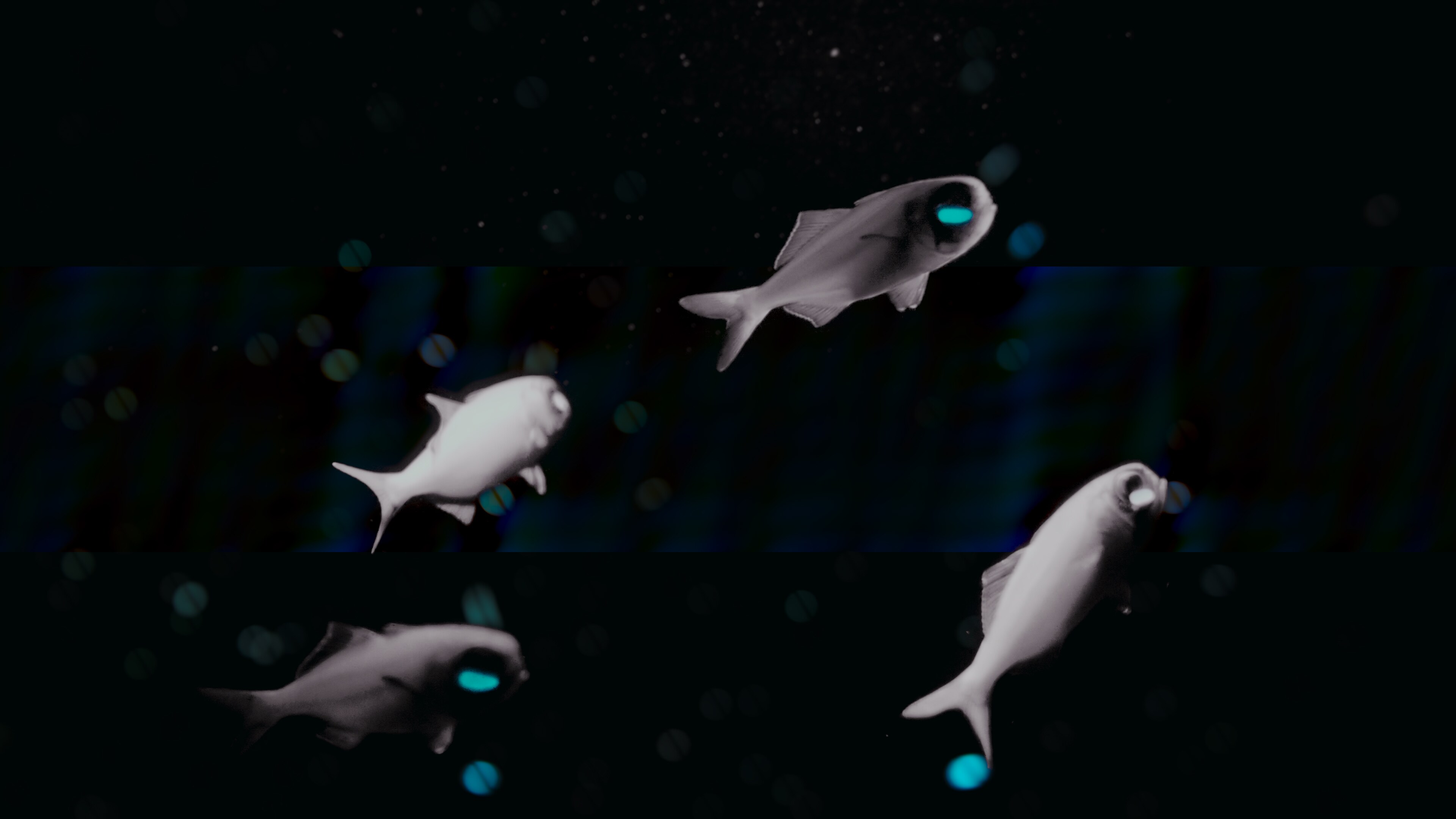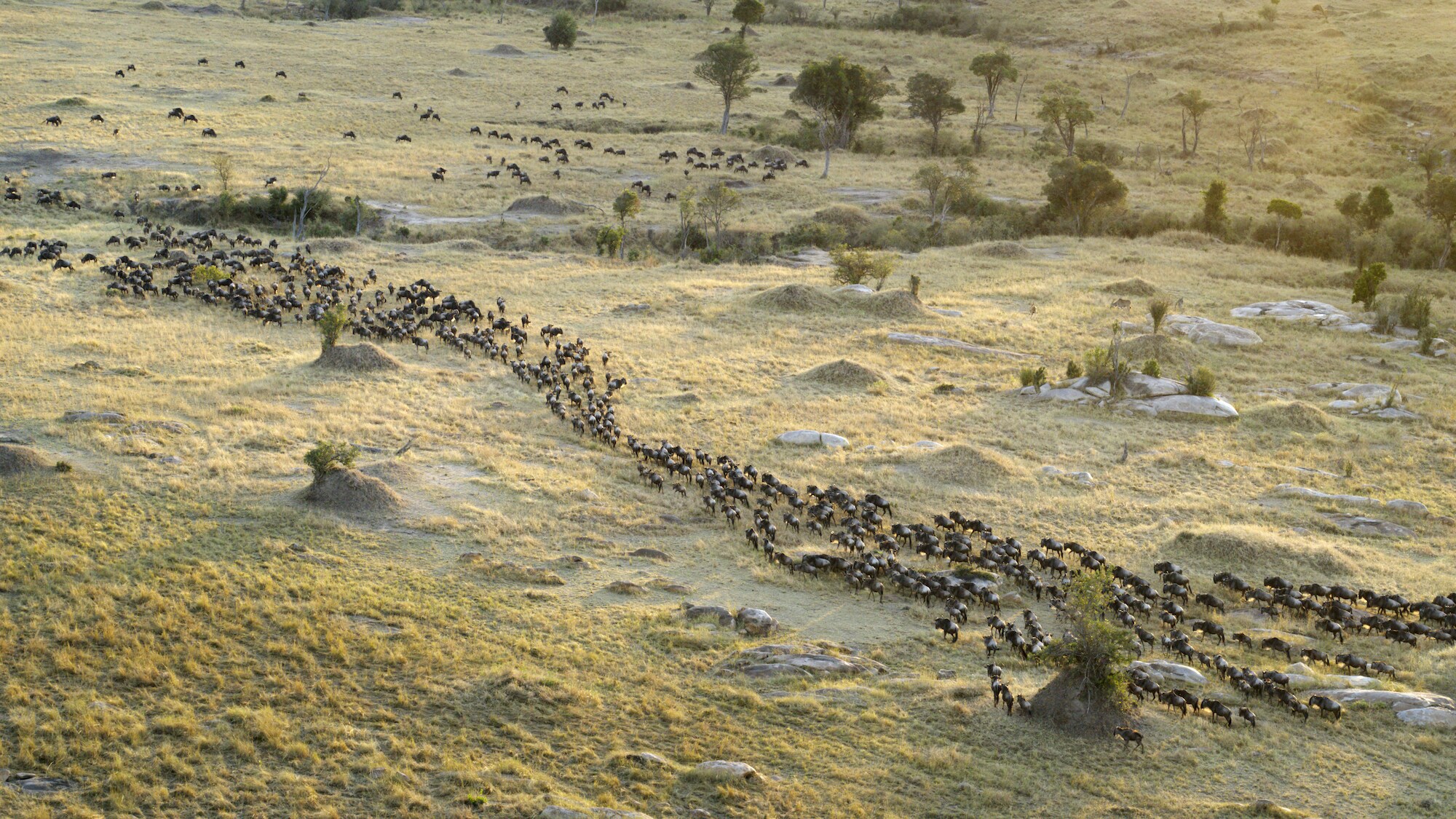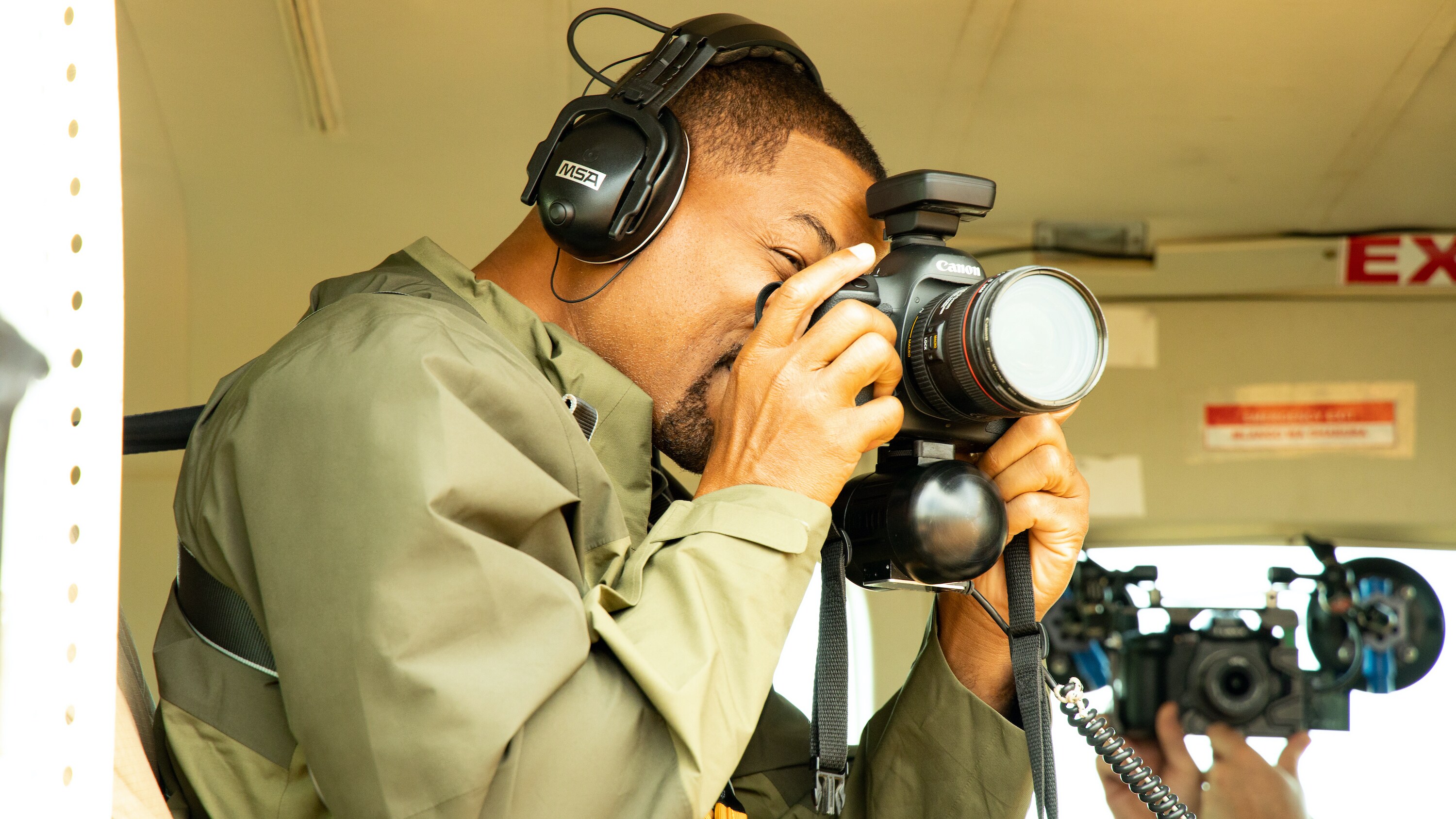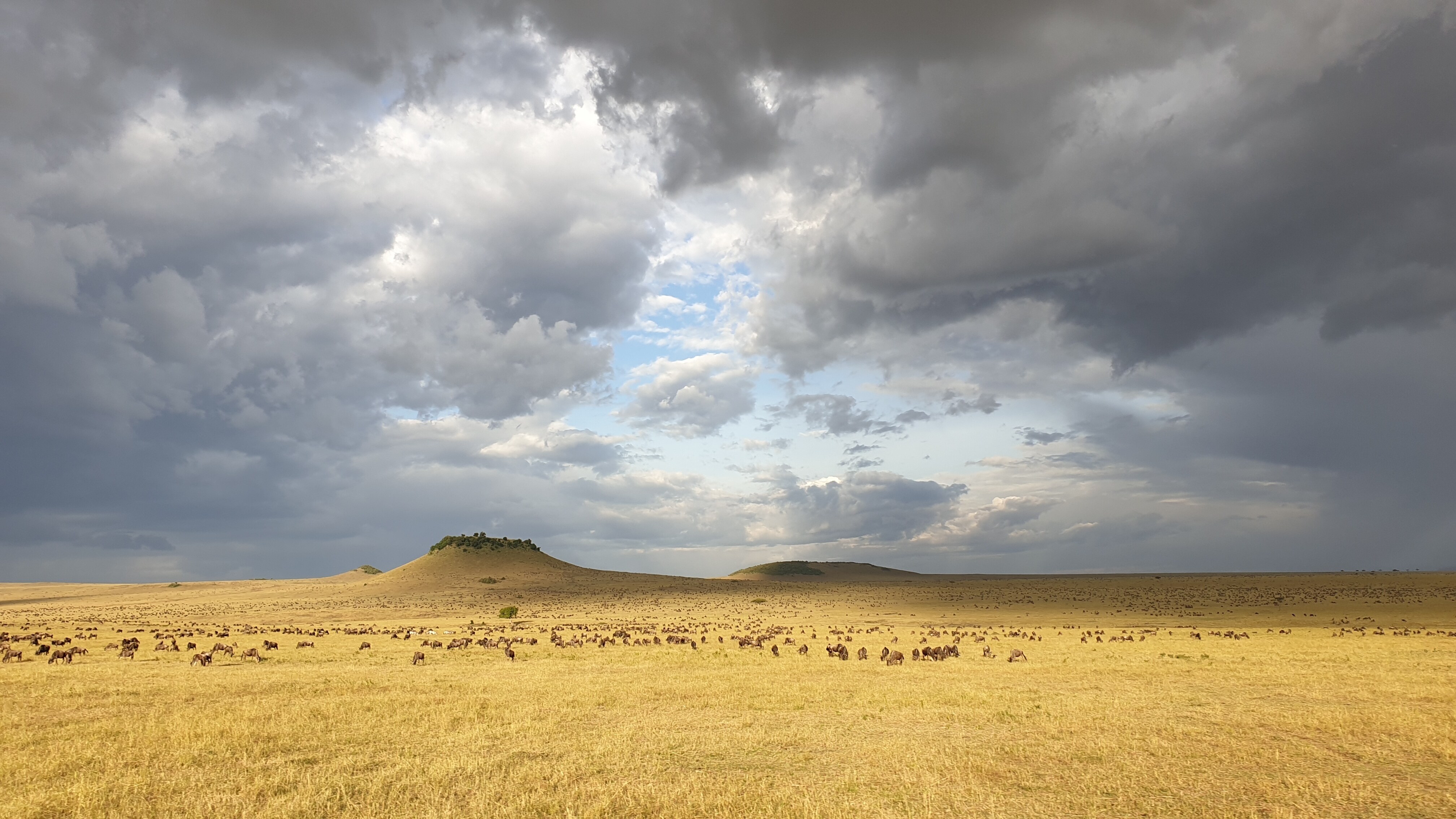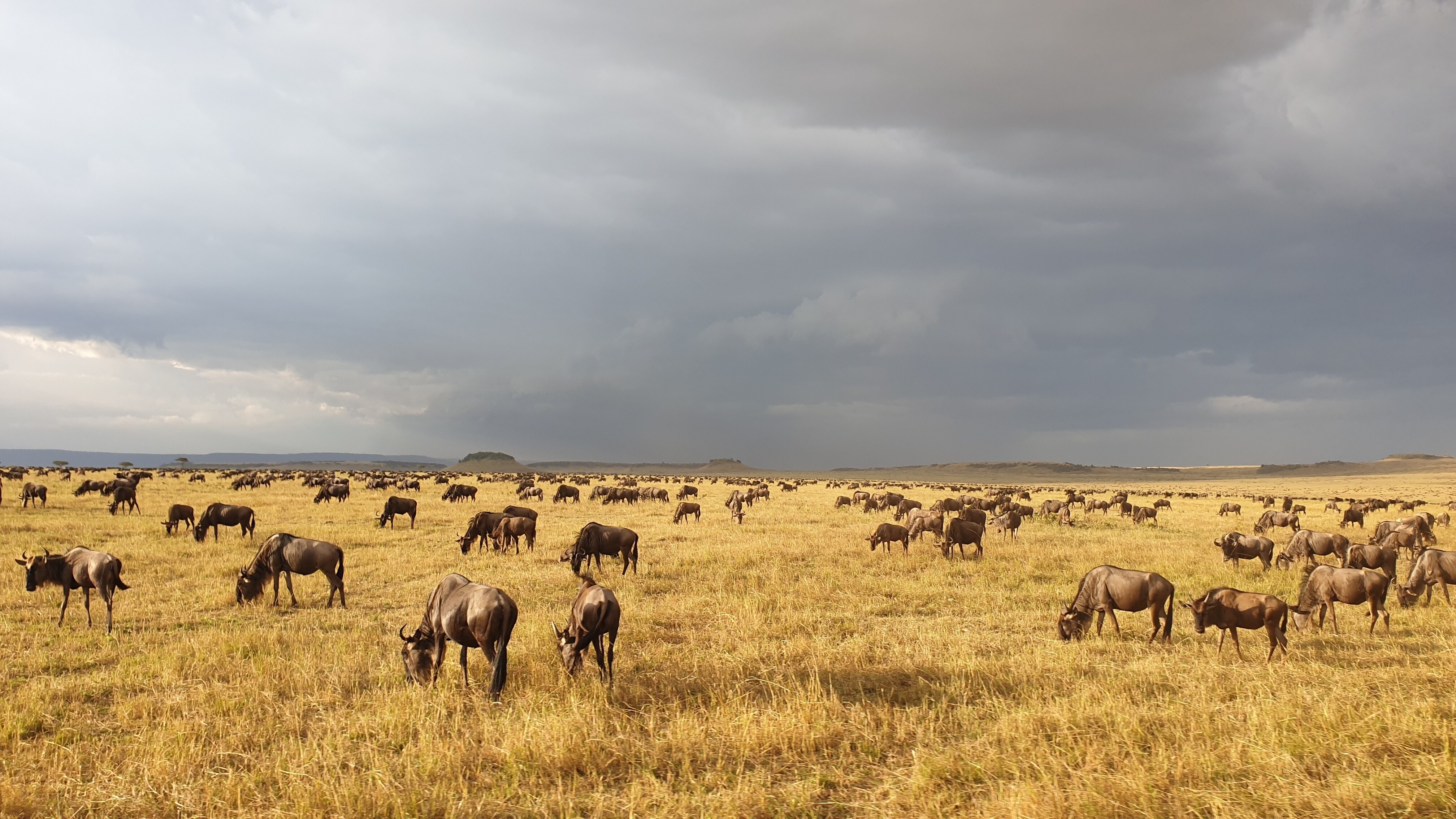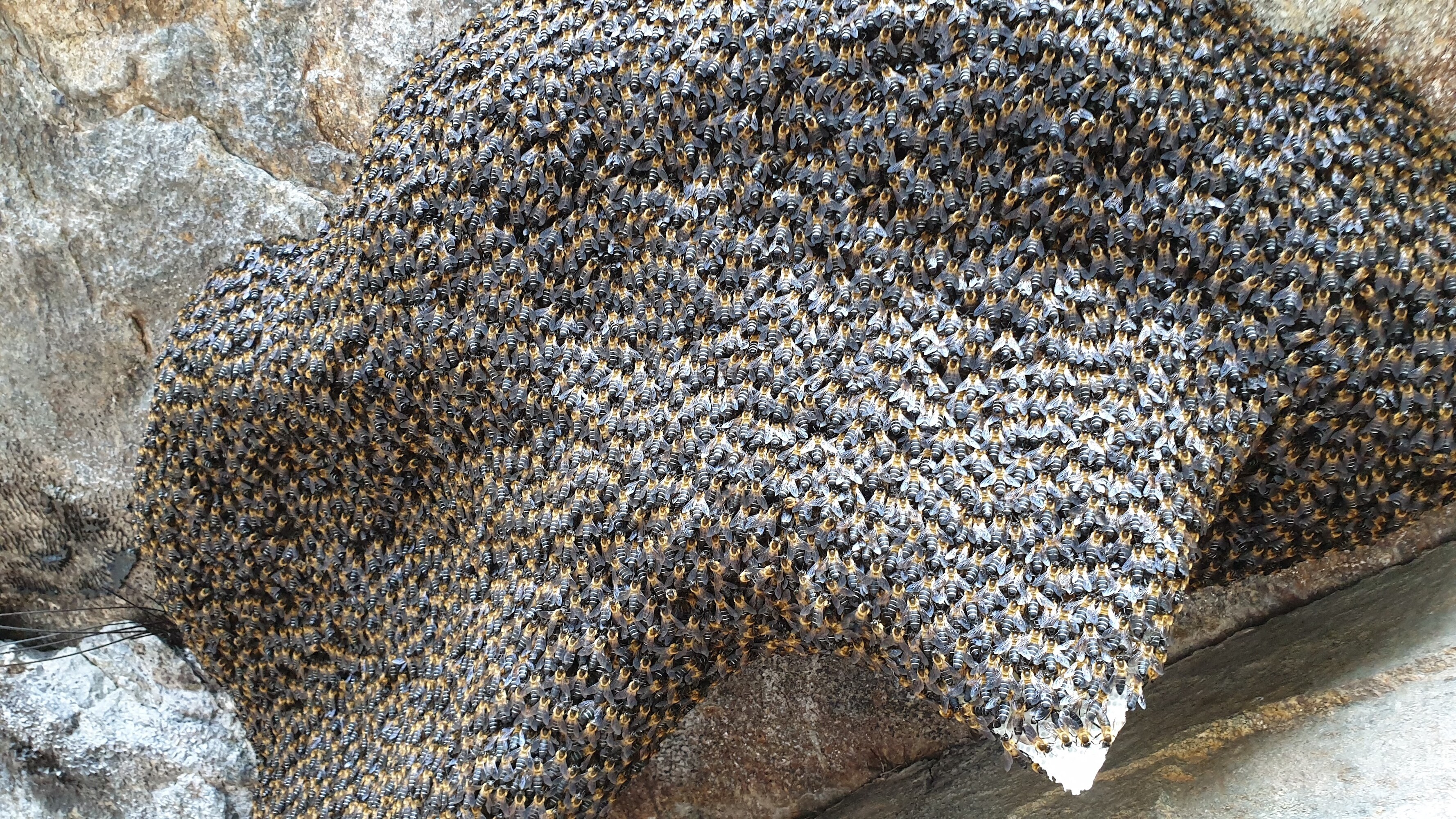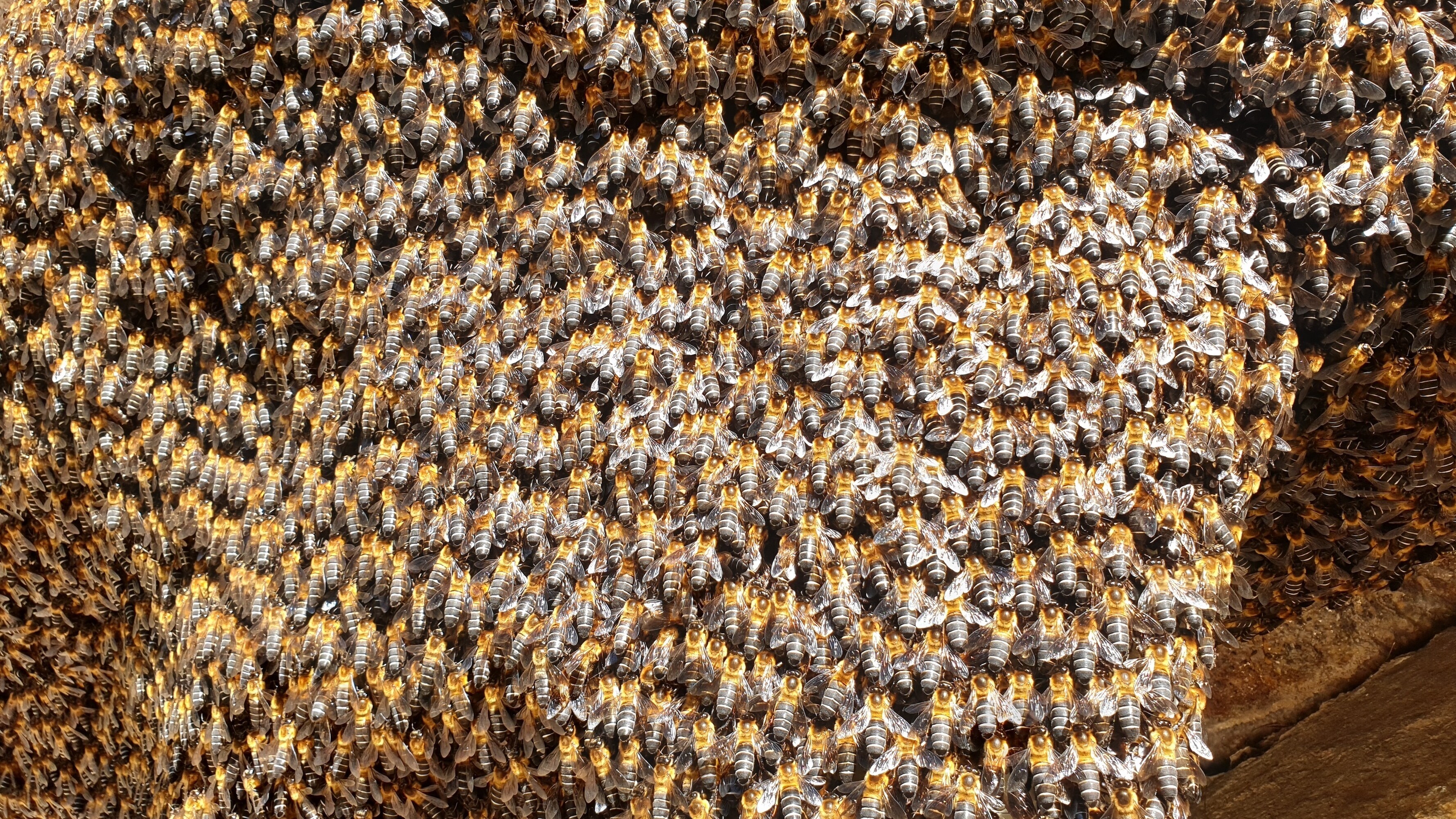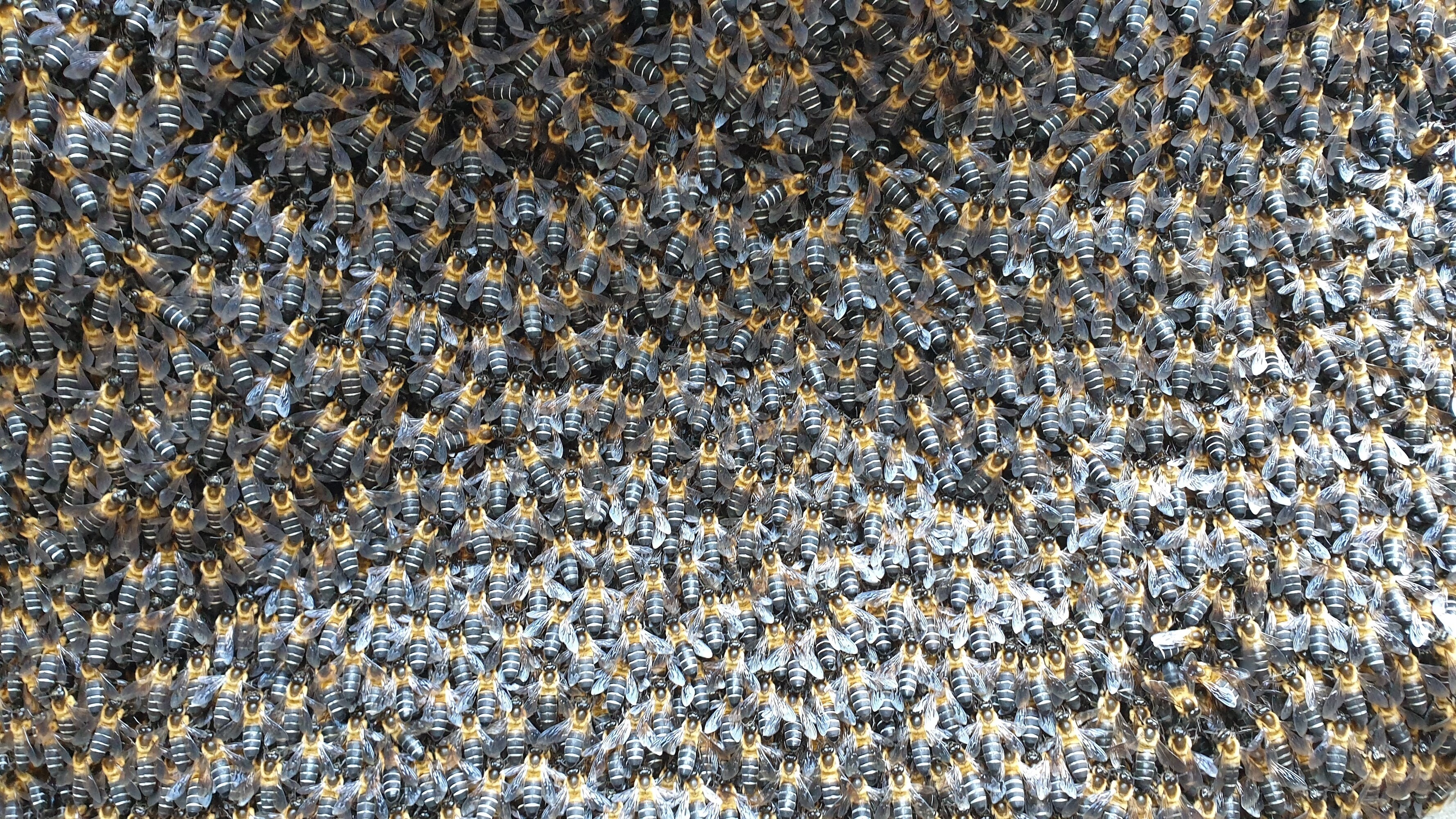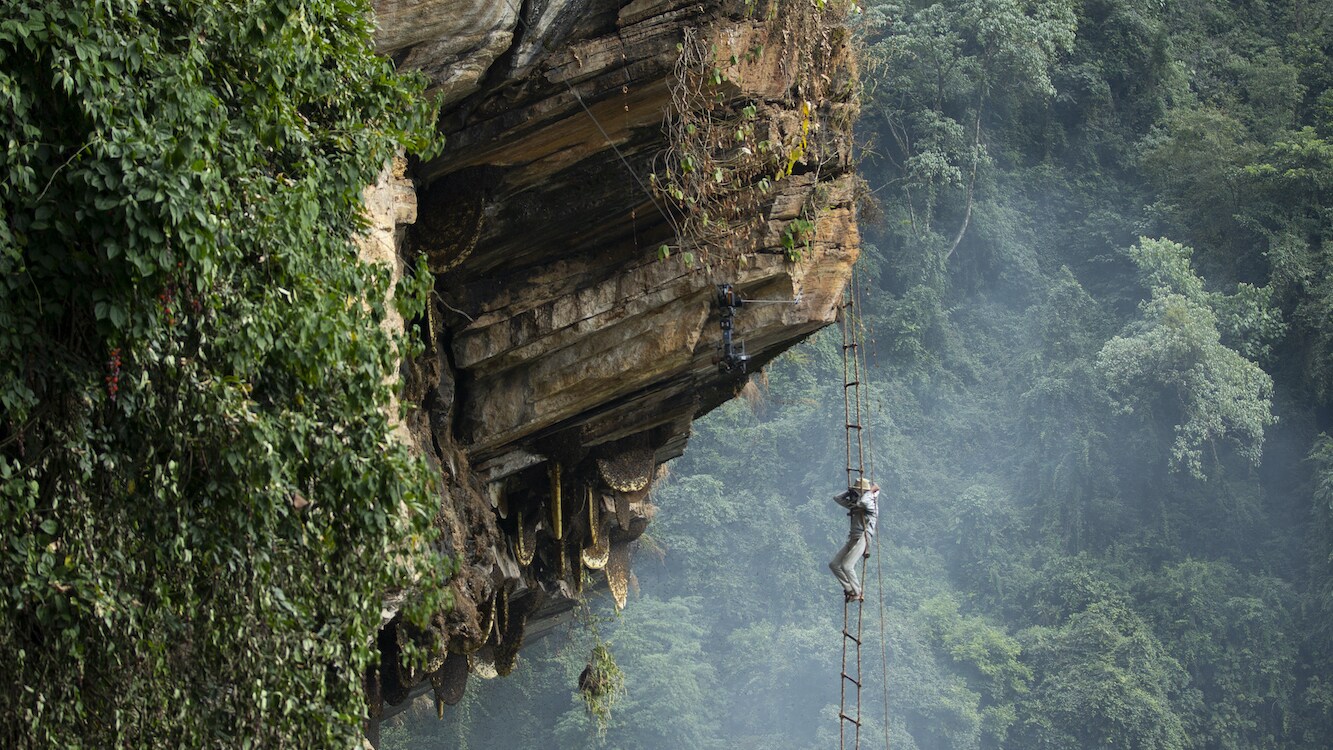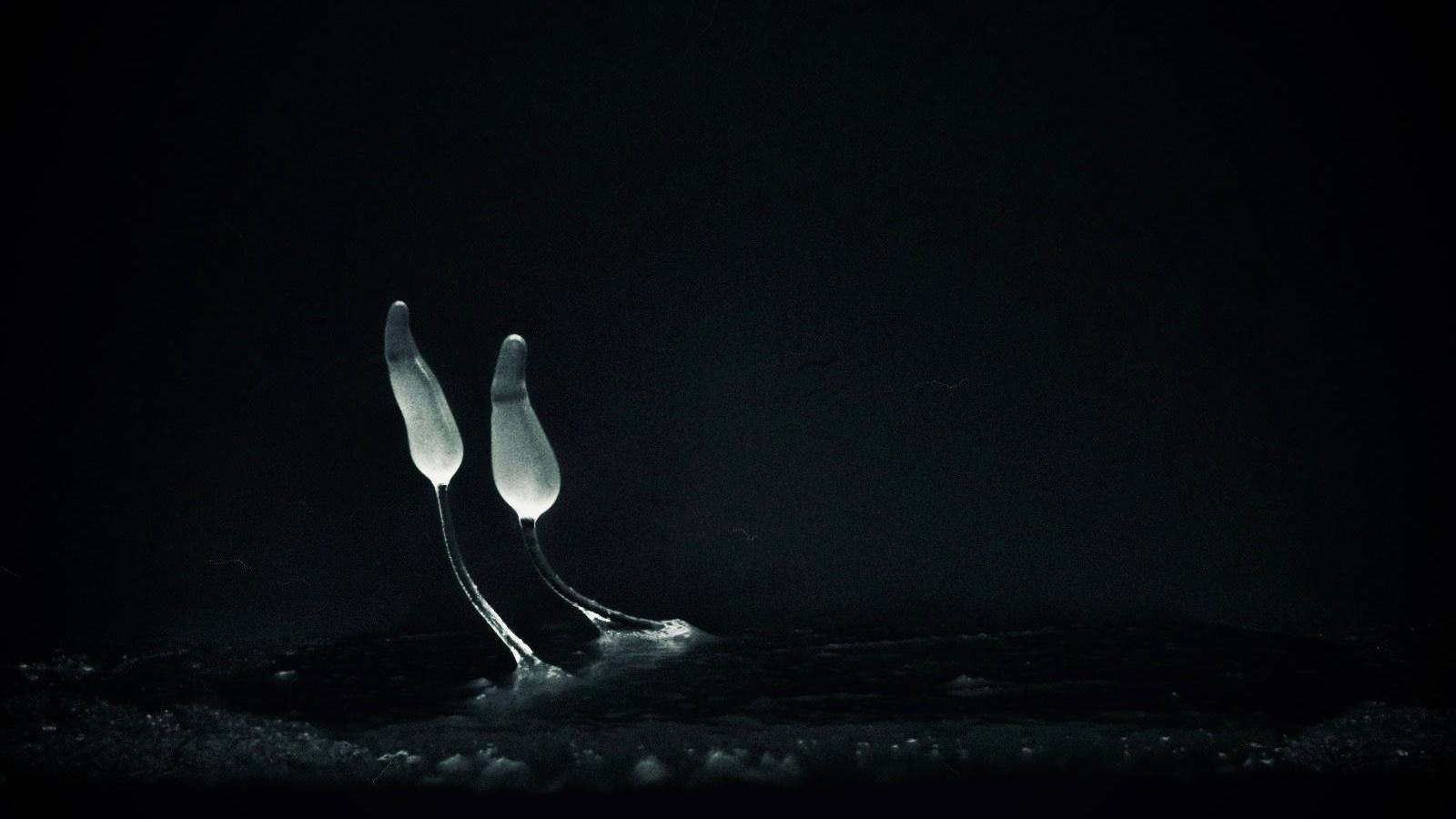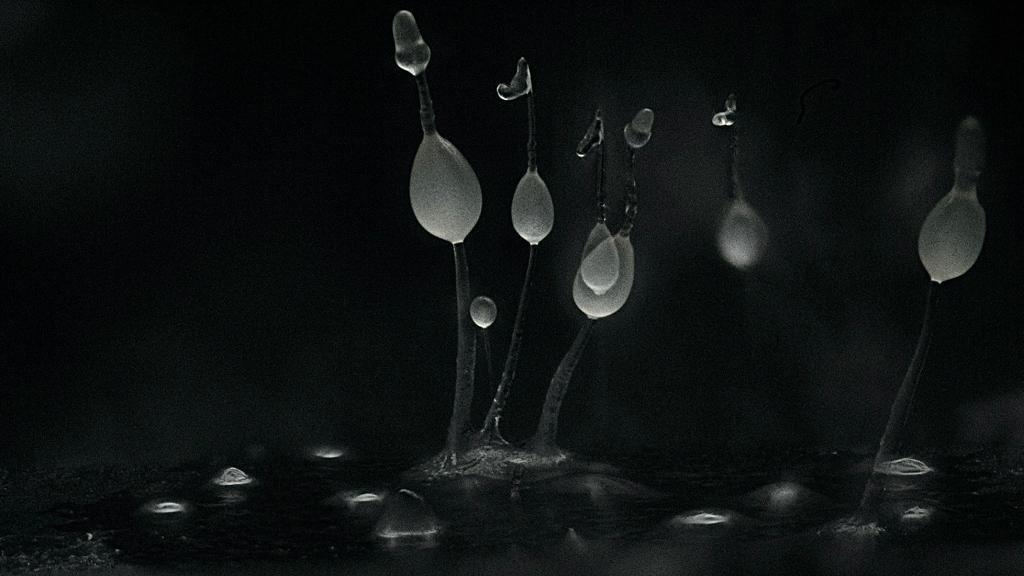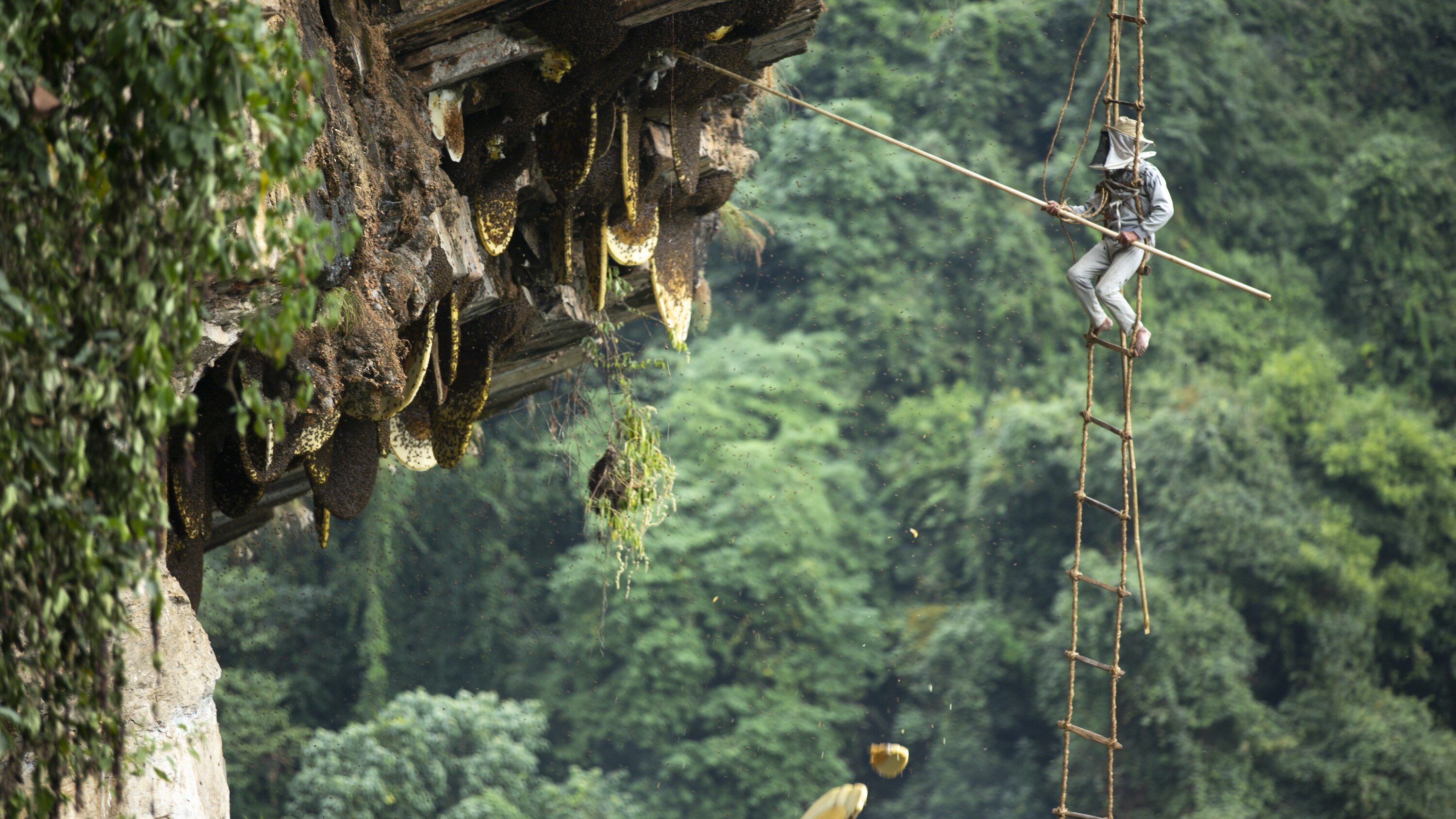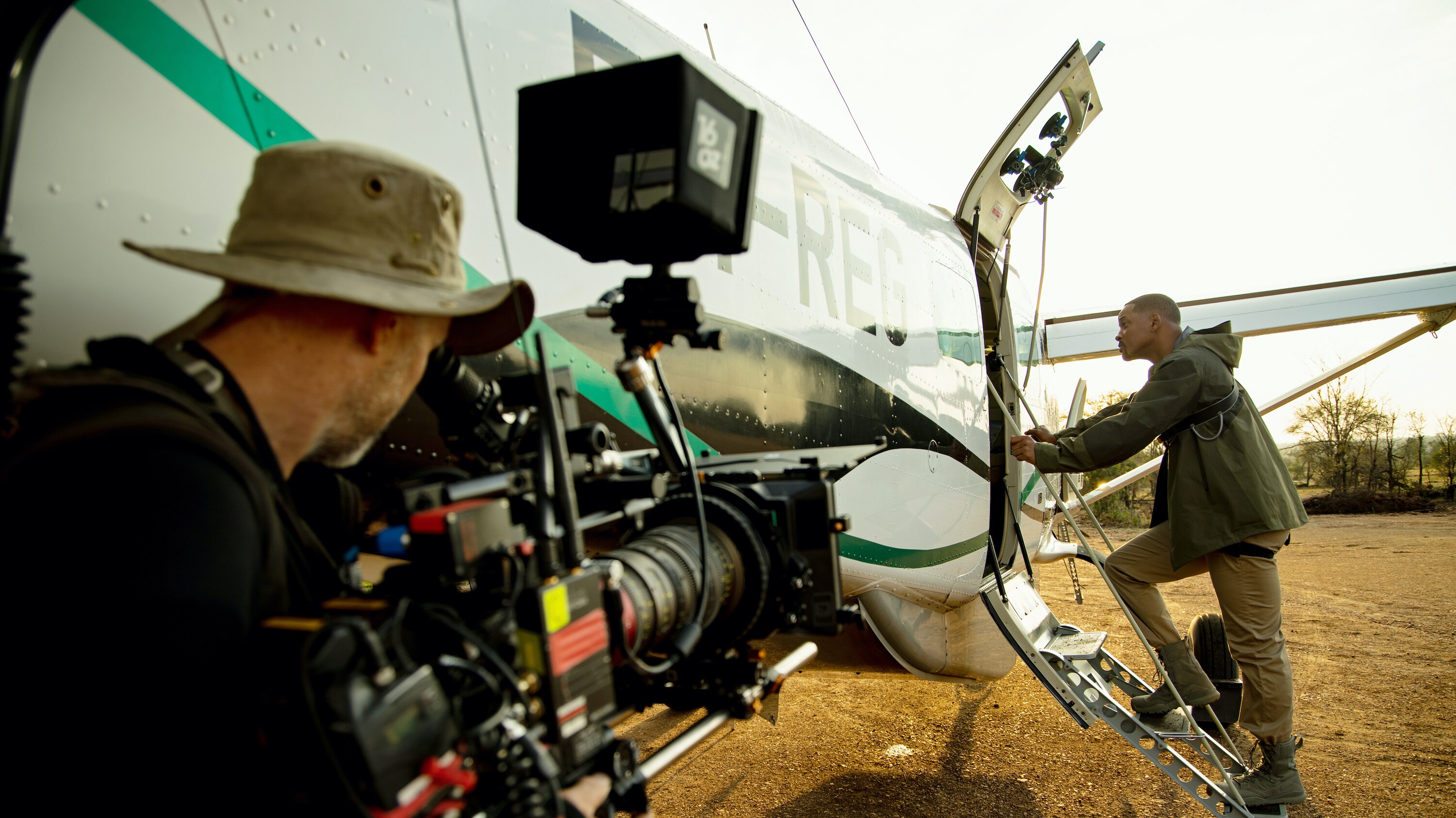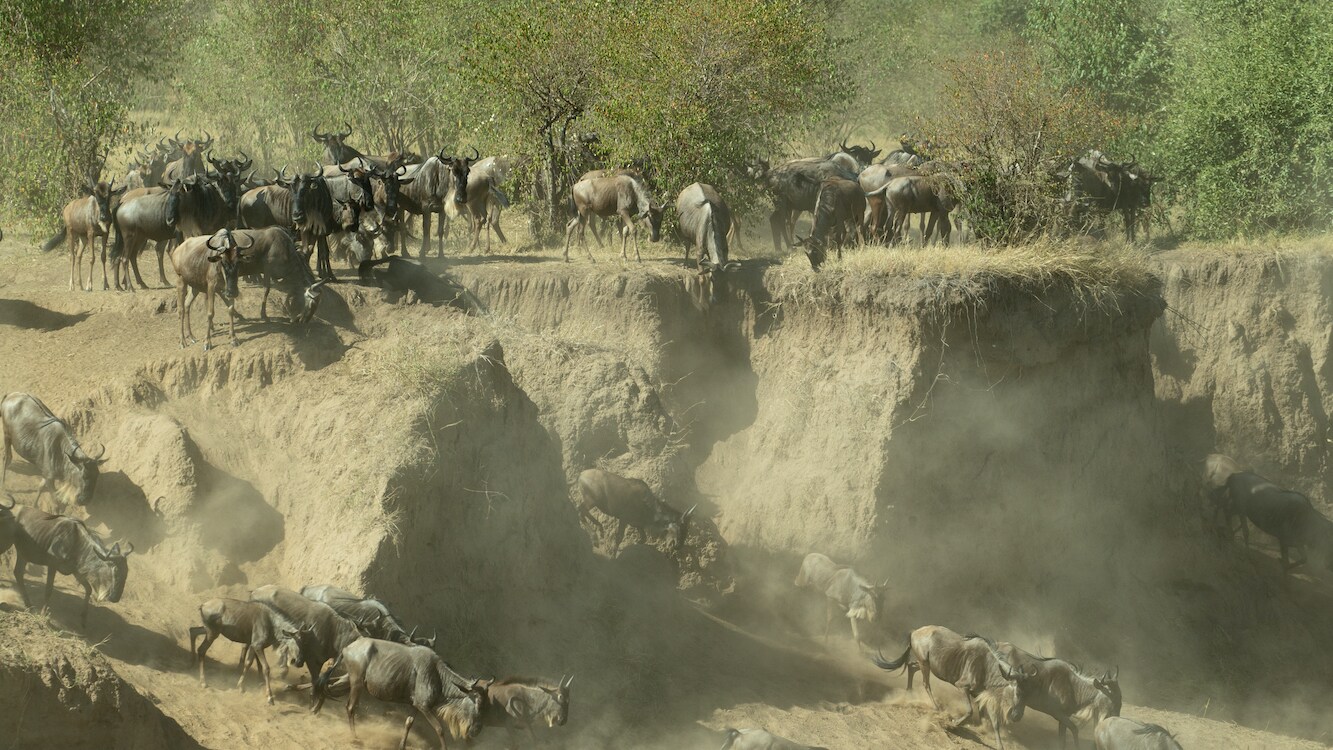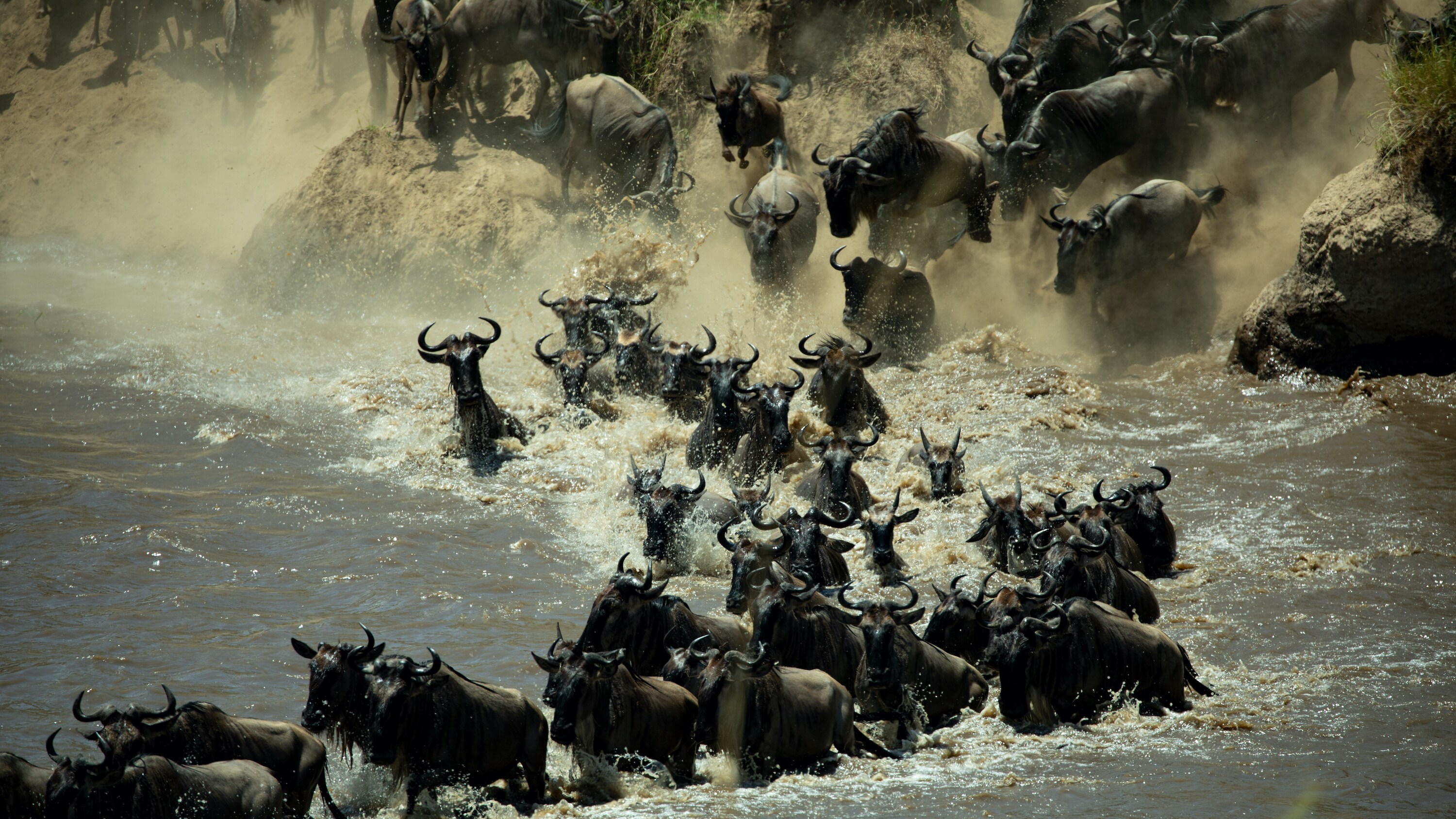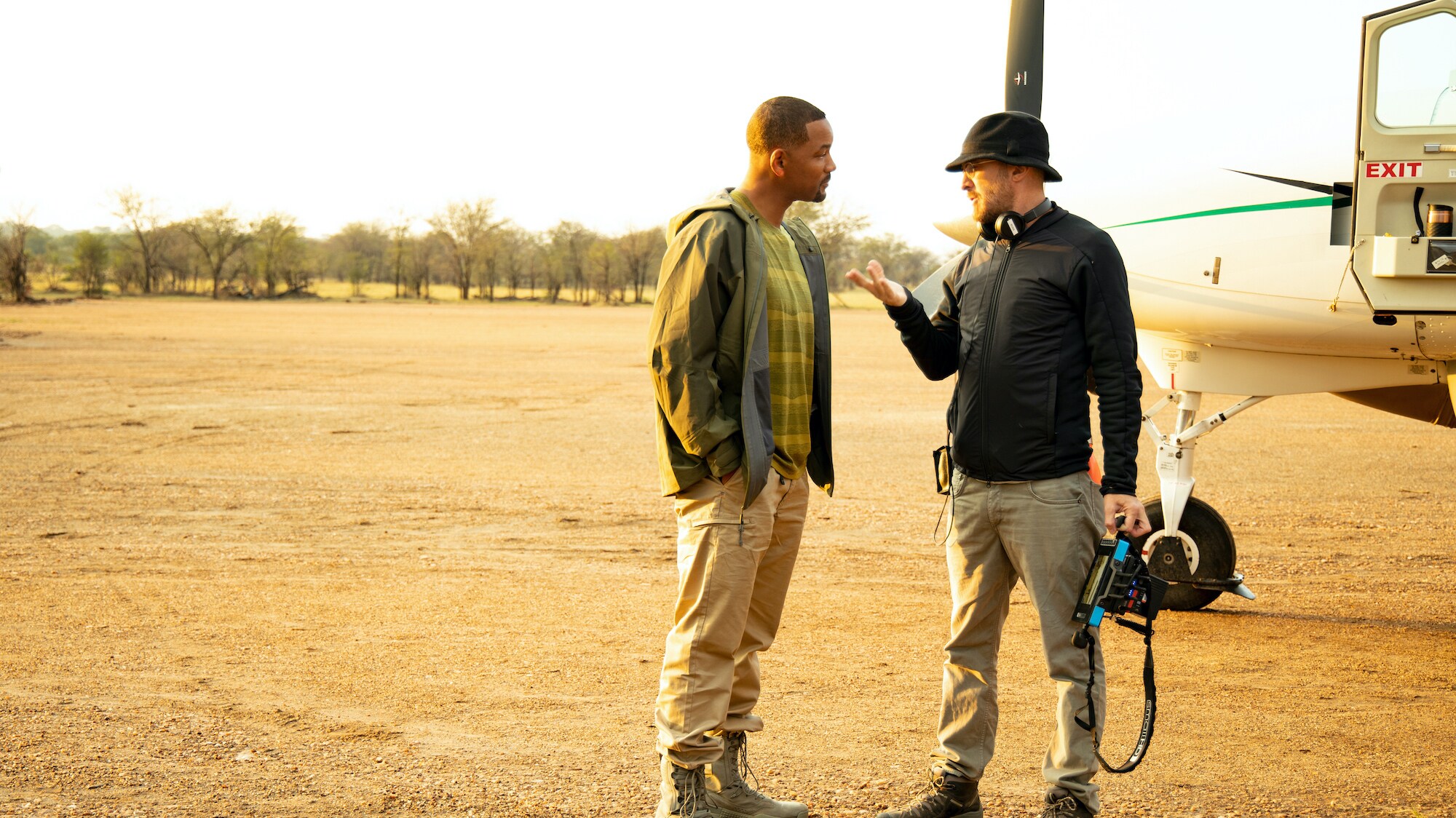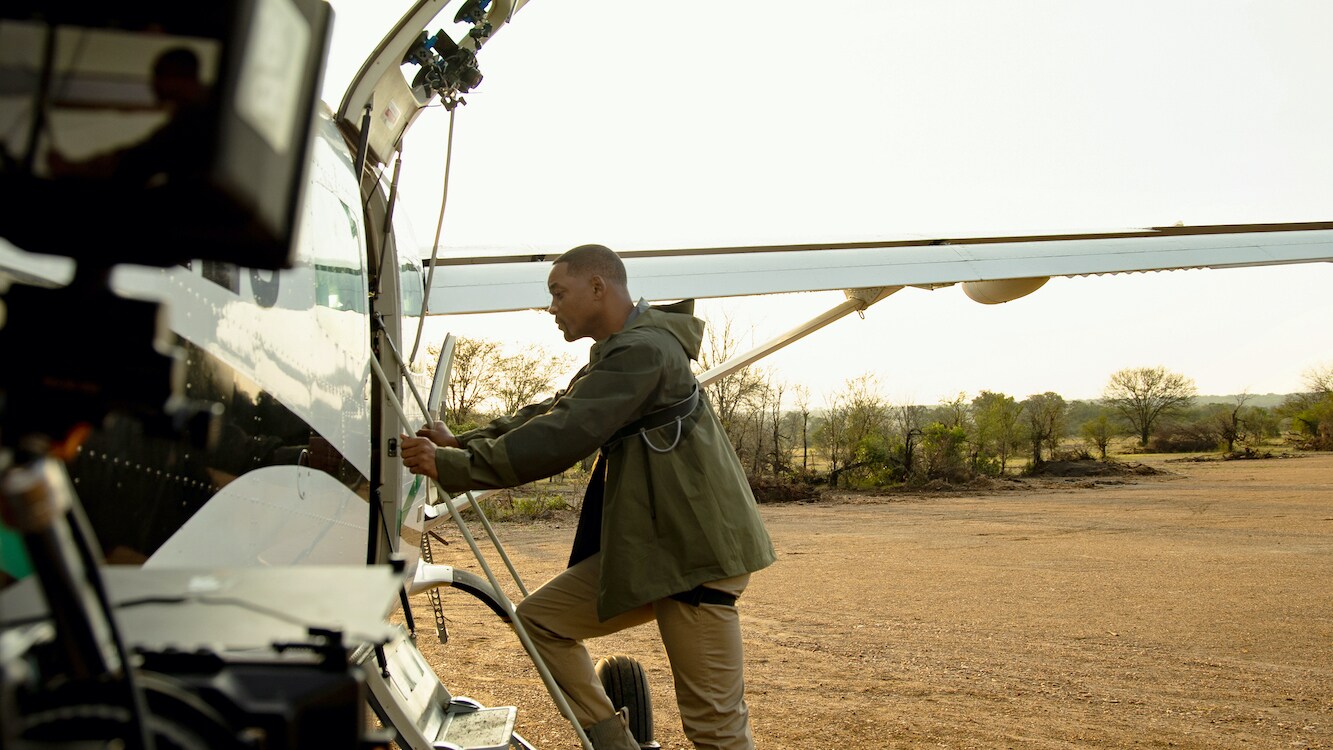Welcome to Earth - "Mind of the Swarm"
Thirty years ago, Will Smith was mesmerized by a photo of the incredible wildebeest migration across the Serengeti in a National Geographic magazine. Now he visits those same wildebeests and discovers an amazing survival strategy. Individually, wildebeests are animals with low intelligence, but when threatened, they group together and behave as if they have a single, super-intelligent brain. Will discovers that without this superpower, thousands of wildebeests could never survive the 150-mile gauntlet of the most blood-thirsty predators on the planet.
To download high-res images, click on the image and then use the Download button in the overlay that appears.
A species of Flashlight Fish, which get their name from glowing light created by bacteria present below the eyes. Found in the western and central Pacific Ocean. (National Geographic for Disney+)
ofA species of Flashlight Fish, which get their name from glowing light created by bacteria present below the eyes. Found in the western and central Pacific Ocean. (National Geographic for Disney+)
ofMigrating Wildebeest in the Serengeti National Park, Tanzania. (National Geographic for Disney+)
ofMigrating Wildebeest in the Serengeti National Park, Tanzania. (National Geographic for Disney+)
ofWill Smith travels to the Serengeti to see the migrations. (National Geographic for Disney+/Kyle Christy)
ofWill Smith travels to the Serengeti to see the migrations. (National Geographic for Disney+/Kyle Christy)
ofWildebeest stretch for as far as the eye can see on the Lamai Wedge in the Serengeti. (National Geographic/Struan Kane)
ofWildebeest stretch for as far as the eye can see on the Lamai Wedge in the Serengeti. (National Geographic/Struan Kane)
ofWildebeest graze on the Lamai Wedge in the Serengeti after crossing the Mara River. (National Geographic/Struan Kane)
ofWildebeest graze on the Lamai Wedge in the Serengeti after crossing the Mara River. (National Geographic/Struan Kane)
ofThe Himalayan cliff bees cling to the outside of their hive, forming a biological structure known as a bee curtain. (National Geographic/Struan Kane)
ofThe Himalayan cliff bees cling to the outside of their hive, forming a biological structure known as a bee curtain. (National Geographic/Struan Kane)
ofThe Himalayan Honey Bee is the largest honey bee in the world and lives on inaccessible cliffs high in the Himalayan mountains. (National Geographic/Struan Kane)
ofThe Himalayan Honey Bee is the largest honey bee in the world and lives on inaccessible cliffs high in the Himalayan mountains. (National Geographic/Struan Kane)
ofThe Himalayan Honey Bee, Apis Laboriosa, forms several layers of curtains on the outside of its hives - they create a synchronous movement that makes them appear like one larger organism. (National Geographic/Struan Kane)
ofThe Himalayan Honey Bee, Apis Laboriosa, forms several layers of curtains on the outside of its hives - they create a synchronous movement that makes them appear like one larger organism. (National Geographic/Struan Kane)
ofChief Honey Hunter, Lal Prasad Jaisi, contemplates the giant hives of honey that lie just out of reach under the overhang. (National Geographic/Bhim Thapa)
ofChief Honey Hunter, Lal Prasad Jaisi, contemplates the giant hives of honey that lie just out of reach under the overhang. (National Geographic/Bhim Thapa)
ofTwo fruiting bodies of soil-dwelling social amoeba, Dictyostelium discoideum, each contain thousands of individuals cells cooperating in order to propagate. (National Geographic/Rob Hollingworth)
ofTwo fruiting bodies of soil-dwelling social amoeba, Dictyostelium discoideum, each contain thousands of individuals cells cooperating in order to propagate. (National Geographic/Rob Hollingworth)
ofThe fruiting bodies of Dictyostelium discoideum each contain thousands of spores and are supported on stalks formed by amoeba that have sacrificed themselves for the colony's survival. (National Geographic/Rob Hollingworth)
The fruiting bodies of Dictyostelium discoideum each contain thousands of spores and are supported on stalks formed by amoeba that have sacrificed themselves for the colony's survival. (National Geographic/Rob Hollingworth)
The first hive of honey falls to the ground as Honey Hunter, Lal Prasad Jaisi, deftly reaches beneath the overhang with his specially designed tools. (National Geographic/Bhim Thapa)
ofThe first hive of honey falls to the ground as Honey Hunter, Lal Prasad Jaisi, deftly reaches beneath the overhang with his specially designed tools. (National Geographic/Bhim Thapa)
ofWill Smith travels to the Serengeti to see the migrations. (National Geographic for Disney+/Kyle Christy)
ofWill Smith travels to the Serengeti to see the migrations. (National Geographic for Disney+/Kyle Christy)
ofMigrations in the Serengeti. (National Geographic for Disney+/Kyle Christy)
ofMigrations in the Serengeti. (National Geographic for Disney+/Kyle Christy)
ofMigrations in the Serengeti. (National Geographic for Disney+/Kyle Christy)
ofMigrations in the Serengeti. (National Geographic for Disney+/Kyle Christy)
ofWill Smith, left, and Executive Producer Darren Aronofsky talk during their travels to the Serengeti to film the migrations. (National Geographic for Disney+/Kyle Christy)
ofWill Smith, left, and Executive Producer Darren Aronofsky talk during their travels to the Serengeti to film the migrations. (National Geographic for Disney+/Kyle Christy)
ofWill Smith travels to the Serengeti to see the migrations. (National Geographic for Disney+/Kyle Christy)
ofWill Smith travels to the Serengeti to see the migrations. (National Geographic for Disney+/Kyle Christy)
of